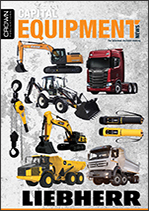 Record new launches for Manitou
Record new launches for Manitou
New equipment: Despite the recent Covid-19 influenced disruptions, trade shows and exhibitions have this year come into their own, reclaiming their crown as one of the best platforms to launch new capital equipment products. bauma 2022 once again lived up to its most significant global construction equipment billing with about 3 200 exhibitors from 60 countries and more than 495 000 visitors from over 200 countries.
Among the standout exhibitors was Manitou Group, which not only unveiled a record number of new products, but also signalled its clear intent to be at the forefront of the electrical revolution with one of the largest lines of new electric machines launched at one go.
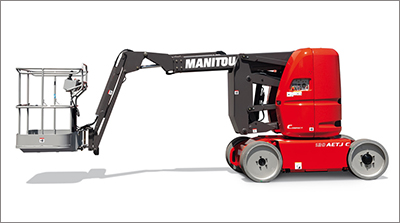 Michel Denis, president & CEO, forms part of the company’s 2030 low carbon trajectory, which aims to reduce Manitou’s direct and indirect carbon emissions by 46%, while reducing the CO2 emissions of machines by 34% for every hour of use.
Michel Denis, president & CEO, forms part of the company’s 2030 low carbon trajectory, which aims to reduce Manitou’s direct and indirect carbon emissions by 46%, while reducing the CO2 emissions of machines by 34% for every hour of use.
Seven-model electric range A major talking point at the Manitou booth was the new seven-model electric line-up, comprising four new aerial work platforms, two rotating telehandlers and a fixed telehandler. With four new electric mobile elevating work platforms (MEWPs) models, Manitou Group is accelerating the roll-out of its ‘Oxygen’ low emissions range. The 100% electric line comprises the 200 ATJe, 160 ATJe, 180 ATJe 160 ATJ+ e rough-terrain platforms. With a working height of 20 m, the 200 ATJe rough-terrain platform is available with four-wheel steer for greater manoeuvrability.
The machine has a basket that can now take 250 kg of load, 30 kg more than the two-wheel drive counterpart. Apart from zero emissions, another big benefit is reduced total cost of ownership (TCO).
Customers can expect a 50% reduction in maintenance costs compared with the internal combustion engine-powered version. With a working height of 16 m and 18 m respectively, the 160 ATJe and 180 ATJe see their capacity increased by 50 kg, with a basket that can take a total weight of 250 kg. The 160 ATJ+ e, the biggest platform in the range, comes with a 400 kg capacity.
Filling the gaps
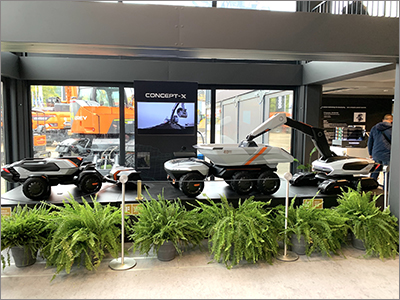 Market Review: As digital transformation continues apace, leading global original equipment manufacturers (OEMs) are hunting for deals at their fastest pace in years, racking up acquisitions and strategic investments in smaller technology firms to fill gaps and expand their offering. The acquisition trend, which has taken centre stage in the past two years, enables large OEMs to position themselves as equipment and technology leaders and one-stop shops for all their customers’ needs.
Market Review: As digital transformation continues apace, leading global original equipment manufacturers (OEMs) are hunting for deals at their fastest pace in years, racking up acquisitions and strategic investments in smaller technology firms to fill gaps and expand their offering. The acquisition trend, which has taken centre stage in the past two years, enables large OEMs to position themselves as equipment and technology leaders and one-stop shops for all their customers’ needs.
Large OEMs across the capital equipment sector are seizing opportunities to buy smaller technology companies to fortify their stables and grow their offerings. According to Bain & Company’s Machinery M&A: Reshaping Portfolios and Hunting Growth report, mergers and acquisitions (M&A) in the industrial machinery and equipment manufacturing sector continue to rise as companies pursue transformative scale, scope and capability deals in a low-growth environment.
After trending down since 2017, M&A deals in the sector jumped to decade highs during the pandemic, as several companies reshaped their portfolios in the face of evolving industry dynamics. The average deal size shot up to US$179-million on average in 2020 and US$161-million in 2021. Last year’s US$63-billion global deal value was the sector’s second-highest annual total of the past decade, behind only 2020’s US$72-billion, according to Bain & Company.
Market fundamentals such as digitalisation and electromobility are driving the need for machinery companies to maintain a robust and evergreen portfolio strategy. The past two years have been mainly deal-centric, with big corporations such as Epiroc, Sandvik and Caterpillar, amongst others, leading the acquisition spree. These leading OEMs are driven to acquire critical new capabilities around software, the Internet of Things (IoT), artificial intelligence, electrification, and connectivity.
The significance of specialised training
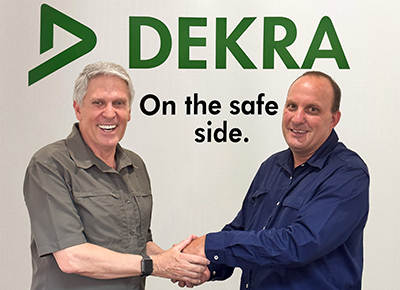 Training: For Dekra Institute of Learning (IOL), 2022 is ending on a high note. The institute moved into new, bigger premises in Centurion, Pretoria, at the start of November. Here they can continue presenting deft training solutions, including their specialised working at heights training courses.
Training: For Dekra Institute of Learning (IOL), 2022 is ending on a high note. The institute moved into new, bigger premises in Centurion, Pretoria, at the start of November. Here they can continue presenting deft training solutions, including their specialised working at heights training courses.
Dekra consults and advises on occupational health and safety-related matters to companies in the construction, industrial and mining sectors, and post Covid-19, they have been busy as more businesses are welcoming back employees, which meant retraining for many clients.
"We are delighted at the growth we have seen over the past two years," says Christopher Mörsner, Head of Training and Consulting. He attributes the company's growth to several factors.
"I believe that, with more people returning to the workplace again as the ferocity of the Covid pandemic abated, employers have been invested in 'doing the right thing' and ensuring that workplace safety matters are firmly on the company agenda. While it is the employer's legislated responsibility to ensure that their employees' safety and well-being at work are considered, many studies have proven that over the longer term, this also has a positive effect on productivity."
That positive effect can be due to specialised training, such as giving employees the skills to work at heights. Not only is it a complex and stimulating job, but the skills can also be beneficial for individuals who can take on roles, allowing them to climb to new positions.
While health and safety training might seem like a tick box exercise employees can complete online, up to 70% of Dekra's work at heights training is practical. Having a mix of theory and practical experience gives learners the edge.
"We try to keep sessions between 7 and 8 hours a day. This generally includes group activities, and breakaway sessions, with approximately 30 per cent of the course being theoretical and 70 per cent practical. It should be noted that acquiring one credit is usually equivalent to receiving around 10 hours of training," he says.
The practical component in completing work at heights training includes a visual inspection of the harnesses and inspections of the serial numbers.
"We also carry out a test on actual scaffolding to allow our learners to experience a real-life working-at-heights scenario. This monitors the mindset of individual learners: including gauging their physical and mental resilience and tolerance levels at different heights," adds Mörsner.
This allows monitoring the tolerance of different learners.
"When certain physical signs are present at a particular height, for example, this indicates that the person should be removed from the environment with immediate effect because they pose a threat to themselves and their colleagues. We, therefore, carry out practical and visual determinations to evaluate the individual at different heights."
The location of the new premises, in the Success Academy business centre in Centurion, is strategically planned. As a result, employees taking on training will be able to access the facility easier due to its location close to public transport.
Get to know remanufactured parts
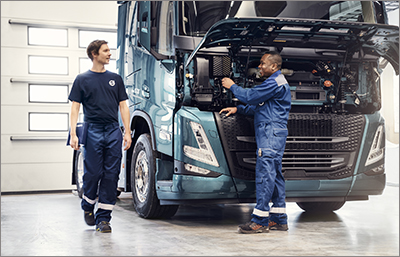 Parts: Karin Kingsley, Volvo Trucks South Africa’s GM for Parts and Service gets straight to the point; South Africa is ripe for a remanufactured parts market.
Parts: Karin Kingsley, Volvo Trucks South Africa’s GM for Parts and Service gets straight to the point; South Africa is ripe for a remanufactured parts market.
“There has been a small shift in buying remanufactured parts from SA customers, and the trend is driven by our team’s drive to make them aware of the benefits. At this point, however, it seems to be more due to affordability than sustainability.”
Transport operators must consider many fixed and variable factors that impact their cost of operation and, subsequently, their business’s bottom line. These include fuel costs, financing, labour, insurance, maintenance and repair.
The lower cost of remanufactured parts makes sense that it is becoming increasingly popular. But the laurels of sustainability shouldn’t be underestimated.
“Remanufactured parts reduce the energy used to make new products. One of the benefits of remanufactured parts is energy conservation, as these parts are meant to reduce carbon emissions compared to newer units,” adds Kingsley.
The price point and reduced carbon emissions are sitting favourably with Volvo clients, and Kingsley mentions that dealers are becoming well-versed in selling remanufactured parts as an option.
“This is achieved through dedicated material and eLearning that we make available to our staff,” he says.
Remanufactured parts might be a suitable investment if you are facing the breakdown of a critical component.
The first would be cost, but quality also ranks high. For Volvo Trucks, remanufactured parts meet OEM standards for performance and always come with a warranty.
“The warranty on remanufactured parts is the same as for any Volvo Trucks part. Two years if fitted in a Volvo workshop and one year when purchased over the counter,” adds Kingsley.
Remanufactured parts also have a much lower impact on the environment since they require less raw materials, energy, and water in the production process. It is one of the significant reasons remanufactured parts are allowed prominence, as environmental concerns are increasing daily.
A newly produced part is made using 100% new raw material, whereas a remanufactured part only uses 15% raw materials since most of the material comes from the core (the faulty part).
“Using remanufactured parts also saves energy, reduces landfill waste, and it means that dangerous residuals inside worn components are taken care of,” says Eric Parry, sustainable solutions manager at Volvo Trucks South Africa. “The process of remanufacturing, which is labour intensive, can also be seen as sustainable from a societal perspective as it creates demand for high-skilled jobs,” he adds.In addition to quality and lower cost, remanufactured parts can also be a quick fix compared to repair, thanks to their growing popularity and availability. Choosing a remanufactured part could put you back on the road just as quickly as purchasing a new product.
Keep the wheels turning
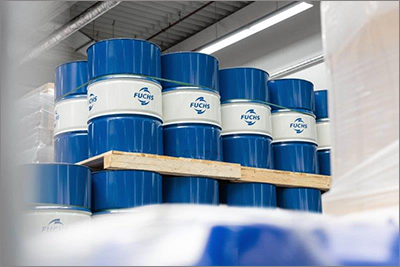 Maintenance: FUCHS Lubricants South Africa is showcasing its premium quality products for commercial vehicle fleets. And it is OEM approvals that clinch the deal when selecting lubricants for fleet maintenance.
Maintenance: FUCHS Lubricants South Africa is showcasing its premium quality products for commercial vehicle fleets. And it is OEM approvals that clinch the deal when selecting lubricants for fleet maintenance.
As one of the leading independent lubricants manufacturers in the country, FUCHS Lubricants South Africa is showcasing its premium quality products for commercial vehicle fleets.
“What differentiates us in the market is our product quality and OEM approvals,” says Lesley Barnard, Automotive Aftermarket.
“Because we are a multinational business following strict processes and procedures wherever we operate, our customers have peace of mind that the highest standards of the lubricants industry manufacture our products. There are no shortcuts taken,” adds Barnard.
Another key differentiator for FUCHS is its service offering. “We focus on working closely with our customers and listening to them. We have the product available when they need it and ensure that all their requirements are met. We supply everything from a bakery with maybe two delivery trucks to commercial fleets with several thousand vehicles, all the way to the OEMs themselves.”
Although lubricants constitute a small portion of the total running cost of a fleet, the benefits of standardising on premium products are considerable. “The payback from using a good lubricant is significant over the long term,” notes Barnard. This extends to the potential of engine failures and increased fuel consumption due to using inferior products.
“Just in terms of fuel consumption alone, by choosing the right lubricant fleet owners can save a significant amount of money over the lifespan of their vehicles by carefully considering the products they use.” Another impact is increased downtime due to trucks standing idle due to maintenance issues. “This is a significant cost that fleet owners must consider. If their vehicles are not running, they lose money. So that is quite important.”
Taking a big picture approach to forklift costs
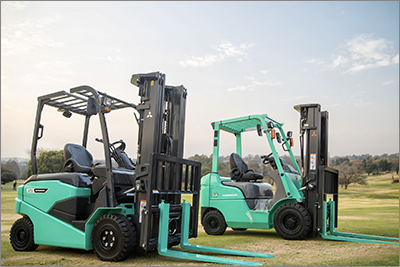 Materials handling: Material handling and warehousing activities that drive crucial economic sectors such as retail are costing companies more and more. The three main factors driving cost include increasing fuel prices, interest rate hikes and a global rise in cost due to lack of supply over the past two years. These factors have all knock-on effect on the cost of material handling equipment. Costs from factory to shipping and the supply crisis in electronics manufacturing have resulted in higher prices for new forklifts. For example, freight costs alone have doubled since 2020 and in most cases, manufacturers have no choice but to pass this cost on to the customer. Compounding what is happening on a global scale, local market conditions have also increased the running costs for forklifts. Technicians call out, labour fees, and the cost of spare parts have all increased because of the global factors mentioned but locally, the rise in fuel prices have also made forklifts more expensive to run. The Rand’s exchange rate has also affected the cost of spare parts. This all points to higher maintenance costs. These factors make it more important than ever for South African businesses that rely on material handling as a key part of their operations to be operationally resilient says Marco Cavern, Masslift Africa’s CEO. Caverni states that all these costs can be managed – and to some extent mitigated – but that this will require a long-term view and a look at the full picture.
Materials handling: Material handling and warehousing activities that drive crucial economic sectors such as retail are costing companies more and more. The three main factors driving cost include increasing fuel prices, interest rate hikes and a global rise in cost due to lack of supply over the past two years. These factors have all knock-on effect on the cost of material handling equipment. Costs from factory to shipping and the supply crisis in electronics manufacturing have resulted in higher prices for new forklifts. For example, freight costs alone have doubled since 2020 and in most cases, manufacturers have no choice but to pass this cost on to the customer. Compounding what is happening on a global scale, local market conditions have also increased the running costs for forklifts. Technicians call out, labour fees, and the cost of spare parts have all increased because of the global factors mentioned but locally, the rise in fuel prices have also made forklifts more expensive to run. The Rand’s exchange rate has also affected the cost of spare parts. This all points to higher maintenance costs. These factors make it more important than ever for South African businesses that rely on material handling as a key part of their operations to be operationally resilient says Marco Cavern, Masslift Africa’s CEO. Caverni states that all these costs can be managed – and to some extent mitigated – but that this will require a long-term view and a look at the full picture.






